Science & Technology — Issue 4, 2017
Getting Back in Time
Richard Gault argues that technology has radically changed our relationship to time
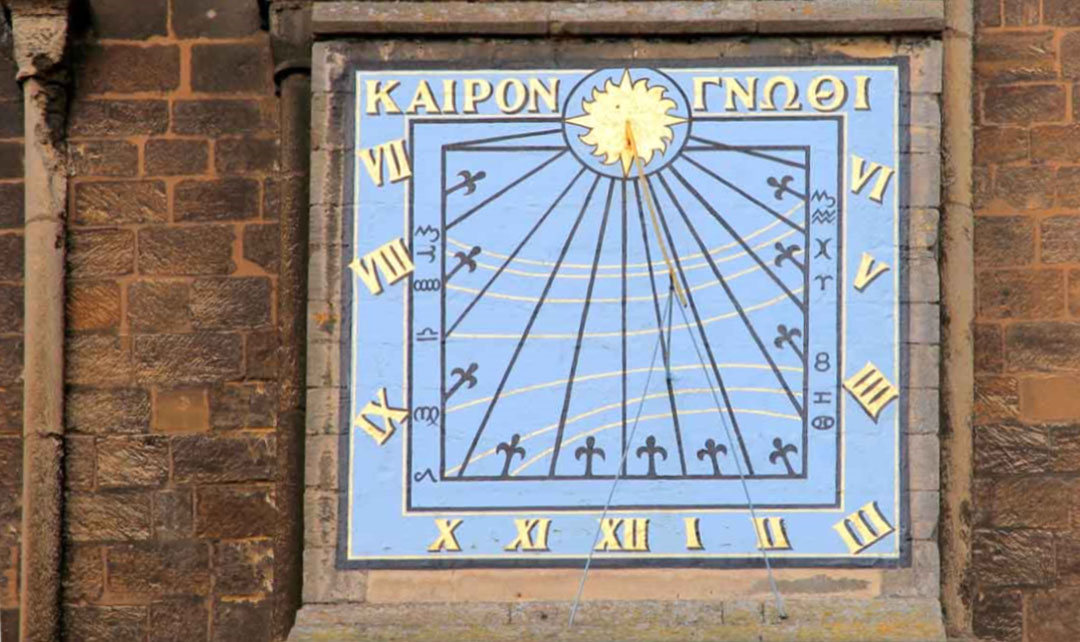
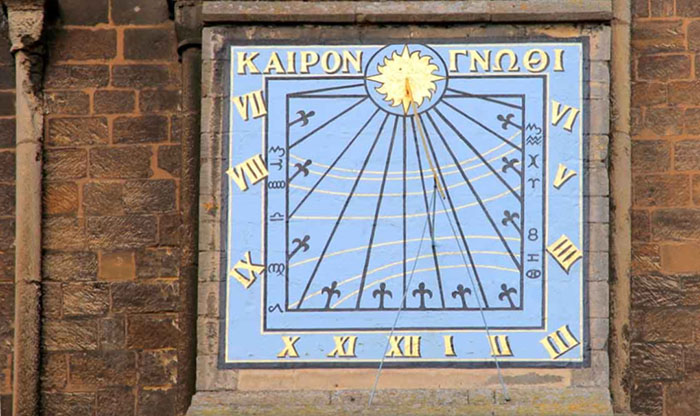
Getting Back in Time
Richard Gault argues that technology has radically changed our relationship to time
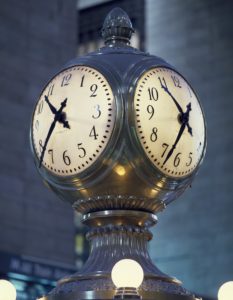 “What then is time? If no one asks me, I know what it is. If I wish to explain it to him who asks, I do not know.” – St Augustine
“What then is time? If no one asks me, I know what it is. If I wish to explain it to him who asks, I do not know.” – St Augustine
“If you actually encounter any person who says that he or she can predict what is going to happen in the next twelve months, then he or she is by definition an idiot.” – The Rt. Hon. Ken Clarke, MP
Time has a hold on us, there is no escaping it. Sometimes it can seem to govern our lives: we’re pressed for it; we don’t have any; it’s running out. We need to be on time and in time. At other ‘times’ we can find we have got time on our hands – or better, the ease of having all the time in the world. It is such a vital aspect of our lives that telling the time is one of the first skills we teach our children. However, after the early years of primary school, and despite its ever-presence and undoubted significance, time disappears from the curriculum.
This seems to simply reflect St Augustine’s position. If time is not questioned, then everyone thinks they understand it – and so, by some sort of implicit circular logic, since everyone understands time, there is no need to question it.
But whether questioned or not, the word ‘time’ is used as if it unequivocally denotes something that is real. However, I want to argue that when Augustine was using the word ‘time’ he was referring to a different sort of time to the one we live by. Not just the ‘times’ but time itself has changed since Augustine wrote his Confessions over 1600 years ago. I will further argue that it is time to put the clock back, as it were – back to the ‘time’ that was Augustine’s time. This implies that there is more than one sort of time. I have called them ‘chronological time’ – the sort of time which is measured by clocks – and ‘kairological time’, from the Greek word kairos meaning ‘the right or auspicious moment’.
Past, Present and Future
.
There are, of course, aspects of time which both Augustine and a twenty-first-century inhabitant share. Time, whatever it may be, seems clearly divided between the past, the present and the future. Yet, though ancient time and contemporary time have this in common, our relationship to each of time’s faces is different from that experienced by pre-modern people.
Henry Ford infamously said that history is bunk. Broadly speaking, in our present culture, he seems to have been correct. The past disappears rapidly into irrelevance in a world characterised by rapid change. It is behind us and has little to teach us in a world far removed from it. It is little more than a resource to be trawled for entertainment, or plundered by politicians for propaganda as proof of their success when in power, or ammunition for criticism when in opposition.
We are much more concerned with the future. There is a constant planning for a better, safer, more prosperous tomorrow. ‘Next year’ we can look forward to fewer traffic jams, less crime, more jobs, for example. But, forward-looking as we are, we do not look far forward. Plans and forecasts are commonly just for a year or two ahead, rarely for more than a decade. Remarkably little preparation is made for a generation or a century beyond the present. Problems like those of desertification, nuclear waste and rising sea levels appear to be widely ignored because their consequences, even though potentially catastrophic, will be experienced well beyond any normal planning horizon.
Hemmed in by the past and future, it might be imagined that the present would be our privileged sanctuary. Yet we tend to feel ill-at-ease with the present. We are inclined to describe it in terms of failings and absences. Read today’s paper and note how much of its news can be described in this way. And when the news is not about what is wrong with today, it is often about the hope of a better tomorrow or (less often) the recollections of a cherished recent yesterday.
And all too often we find that we simply do not have enough time. Time harasses us. There is not time to do all we wish or need to do. Time is pressing; time is money; time runs out and we are out of time. There are desperate races against time, and so the endeavour is to do things faster, or to get what we want without delay. Is this not the very essence of progress? We demand near immediate satisfaction: instant replays, heat at the touch of a button, meals in a moment from the microwave, same day deliveries.
These days we are closely circumscribed by our temporal boundaries. But the narrowness of time’s frame is peculiar to secular modernity. In times past, time stretched much further back, back to an ancestral past honoured in the present, while care for future generations informed present activity. Story-tellers retold ancient tales as if they had witnessed the events they vividly recounted. Medieval cathedral builders began tasks knowing they could take a century to complete. The Chinese took a millennium to dig the Yun-Ho Canal. What contemporary project spans more than a decade?
Knowing the Time
.
Our unease or dis-ease with time is even more remarkable in an era when we have the greatest command of time. Clocks are more accurate and more widely available than ever. Could there actually be a relation between the fact that we know the time most of the time, and the stresses time imposes on us?
To answer this key question we need to consider how we know the time. We think we know it because of our ubiquitous and easy access to accurate chronometers. So if I say, meet me at two o’clock and you show up at quarter-past, the unavailability or unreliability of a timepiece will be a poor excuse. Our chronometers enable us to control time so that we can coordinate and orchestrate all manner of human and physical activities. Science since Galileo rests on the measurement of activities and events against measurable time. Likewise commerce and industry, railways and airlines, schools and hospitals, television and sport – in short, all the institutions of our modern civilisation – are contingent upon time measurement and coordination. Small wonder then that Lewis Mumford, in his classic work on the history of technology, Technics and Civilisation, designated the clock (rather than the steam engine, for example) as the most critical invention for our civilisation.
The banality of chronometers means that we fail to appreciate their true significance, so it needs someone like Mumford to draw our attention to their essential role: then we can agree that without accurate clocks contemporary life would be impossible. Yet in the history of the world there have been scores of other civilisations and none of them possessed chronometers as such. Primitive timepieces – such as the sundial, sandglass or water clock (klepsydra) for example – are misrepresented if described as a chronometer. They did not measure time as our clocks do, or perhaps, as I shall explain, they did not measure the time that our clocks measure.
No other civilisation, society or culture has relied on the chronometer. But it is also true that no civilisation, society or culture has functioned without a sense of time. Activities need coordinating. But coordination itself does not require a clock. An example of this was experienced by the anthropologist Hugh Brody when he lived amongst the Beaver Indians of British Colombia. In his book Maps and Dreams, Brody describes how one day he was invited to join a hunting party. After a short trek the party split up into individuals or pairs for the morning’s hunt, agreeing to meet for the midday meal at a particular spot. Brody writes:
“No time had been appointed for the rendezvous. Indeed, clock time is of no significance here…. Everyone nevertheless appeared from the woods and converged on the fishing spot within minutes of one another.”
He concludes: “This coordination of activities is not easily understood….”
The Indian’s uncanny sense of time is a mystery to the wearer of the watch. Brody has a watch but what he patently does not have is an unmediated, direct experience of time itself. The Indians do. They live in time whereas Brody lives out of it.
Chronological and Kairological Time
.
The time we live by is chronological time. It is a time of durations or intervals: intervals which are standardised and regularised so that an hour is an hour, wherever and whenever. Although we say a day is made up of twelve hours of daytime and twelve hours of night, we know this is loose talk. Here in Britain daytime can vary between eight and sixteen hours depending on the time of year; and we know that during our midwinter gloom the inhabitants of the Antipodes are enjoying longer hours of daylight. The number of daytime hours may vary but the hour itself, this cardinal interval, remains an hour in summer and winter, in Britain and New Zealand.
For those of us governed by chronological time, this is simply common sense. We can only be bemused by the ancient Egyptians and the Romans who devised water clocks [/] that always registered twelve hours of daytime throughout the year. The intricate mechanisms shortened (by our measure) hours in the winter and lengthened them in the summer to ensure a twelve-hour day every day. Thus, if a Roman had recorded an event as happening three hours after midday, we would need to know the day of the year so as to fix it in chronological time: it could have been anywhere (by our reckoning) between two and four o’clock.
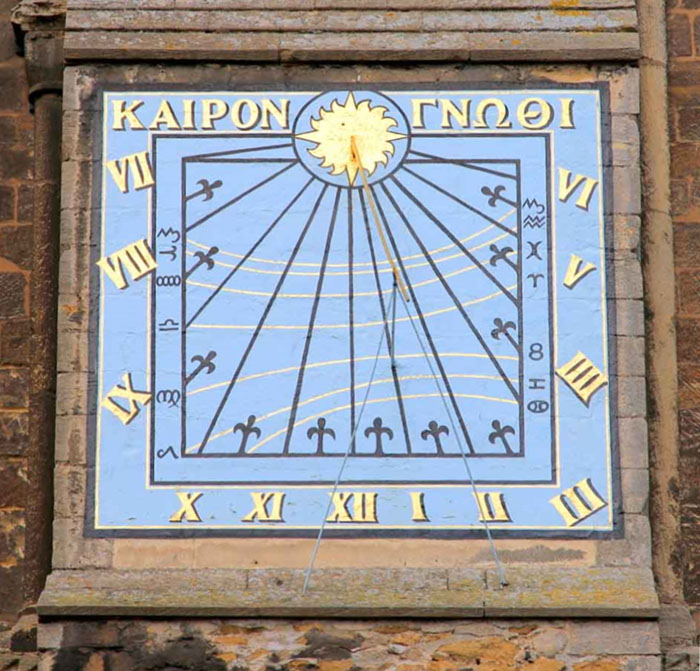
Sundial on the South Elevation of Ely Cathedral, Cambridgeshire, UK. The motto is the famous saying of Pittacus of Mytilene (c. 640–568 BC): “know the time” or “choose the timely moment”. Photograph by Dave Porter / Alamy Stock Photo
Why did the ancients go to the trouble of devising their ingenious water clocks? Why did they not see the advantages of a standardised hour? The answer is that they were building clocks attuned to the other type of time – kairological time. Kairological time is the time the Greeks knew to be the time for humankind, the time in which the Beaver Indians hunt, the time in which citizens of all other cultures live or lived out their lives.
Kairological time is the time of events rather than intervals. It is the time of ‘right times’, the right times for things to happen. It is the time of the Ely sundial, whose message, kairon gnothi, often translated as ‘know the time’, is more accurately rendered as ‘choose the opportune moment’. Though our sense of this is atrophied, we still do sometimes respond to it. If we feel a hunger coming on and consequently announce, “It’s time for lunch”, we are announcing a kairological time. By contrast if we declare, as we more commonly do, “It is one o’clock, lunchtime…”, we are responding to an imperative of chronological time, where the clock determines the activity.
Now it is possible to understand the early, primitive clocks. They mirrored events rather than measuring intervals. The sun halfway between its highest point and its setting was marked as three hours after midday on the Egyptian’s water clock every day of the year, for example. The early mechanical clocks of the medieval monasteries, though they would ultimately lead to the chronological clock, also marked events. They indicated the right time to sound the bell to summon the brethren to prayer, rather than recording the passage of time (see Daniel Boorstin, The Discoverers). The first sophisticated mechanical clocks such as the Prague astronomical clock showed both chronological and kairological time, displaying hours of fixed duration alongside hours whose length varied with the season.
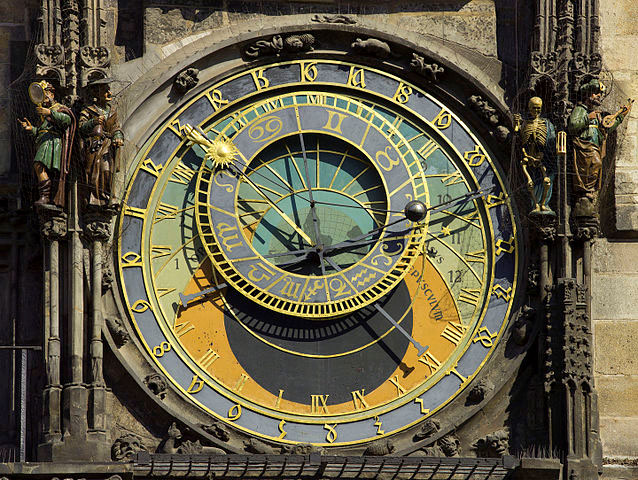
The astrological clock in Old Town Square, Prague, installed in 1410, is the oldest functioning astronomical clock in the world. Photograph by Andrew Shiva (own work) via Wikimedia Commons
The passage of time is very different between chronological and kairological time. In chronological time it is we who are in motion while time stands still, whereas in kairological time the roles are reversed. Furthermore, there is a difference in orientation: in chronological time we face the future while kairological citizens have their backs to it.
We are familiar with the chronological notion that time flows from past to future. Three o’clock, for example, is three hours after midday and three hours before six o’clock. Life, like a story, has a beginning in the past, a middle ‘now’, and an end somewhere in the future. Activities unfold from a past origin. In contradistinction, kairological time appears to move in the opposite direction. Future events come towards us, then we experience them, before finally they recede into the past. In the morning, lunchtime approaches; at midday, we eat; in the evening, lunch withdraws into dimming memory. Always events emerge from a future source.
Chronologically time is an unmoving axis. It comprises an infinite series of fixed points. To take an arbitrary example: 10am on 1 February 2017 remains where it was and always will be: one minute after 9.59am on that day and exactly twenty-four hours before 10am on 2 February. It is we who are in motion: mounted on time’s arrow, we travel relentlessly along this temporal highway in which dates are the milestones and clocks the milometers. But in kairological time, we are stationary. We are fixed to the present, the only place we can be. All that we can ever experience is happening ‘now’. It is the happening which flows. It comes out of the future, passes through us and slips away into the past, leaving behind its trace in our changed presence.
Living by chronological time we need to face forward to see where we are going. Some glances back can help, but only in so far as the recent past is a mirror to the future. By extrapolating past experience, past journeying, we aim to predict where we are heading. So forecasting based on last year’s statistics are valued as providing maps of the future. But even better, since it is we who are travelling, we can hope to control our steed – time’s arrow – and direct our progress forward. We can determine the future; we can plan.
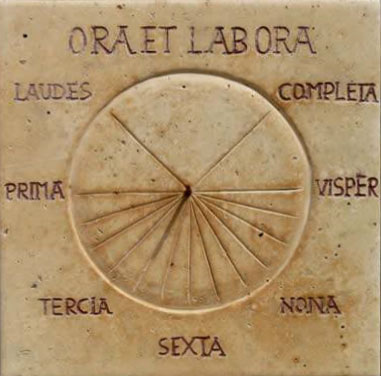
In kairological time, by contrast, the future is not planned but prepared for and responded to when it arrives as the present. Response is vital, since the kairological future delivers not a pre-determined, fully-formed present, but opportunities and challenges. It is the human response to the possibilities as they emerge from the future that actually yields the present. This is why, as Hann has pointed out, for the Greeks kairos is ‘the time for humankind’.
An important part of preparation for the approaching future involves acquiring the wisdom to be gleaned from the lessons of the past. As a trivial example – knowing that past winters have been cold, it is prudent to be prepared for the cold of the winter that approaches. More profoundly, the past offers paradigms of how to be prepared. The paradigms emerge through recollecting foundation myths, tales of tragedy, and stories of success. The experiences of ancestors can teach us how to comport ourselves in the present and how to compose ourselves for the future. In summary, living in kairological time requires an openness to both past and future if the potential of the present is to be fully realised – as Heidegger, in his seminal essay ‘Time and Being’, recognised.
Now we can understand why anthropologists have discovered in other cultures that people are concerned primarily with the past, whereas our focus is on the future. We can also see why such concern as we have for the past can only be for the recent past. We view the past pragmatically as the predictor of the future, so that in a changing world the past of more than a decade ago is largely irrelevant. By contrast, from a kairological point of view the value of wisdom and experience remains eternally present, so that no past, however remote, ever ceases to be of interest.
Similarly, for us the future can never be far away because we understand that there are inherent limitations in our techniques of prediction [see Clarke’s quote at the beginning of this article). Our future is short – or even, as I shall argue below, devoid of reality. But for the citizen of the kairological culture, although the future is hidden from view, it stretches to eternity. Looking to the past, they know that the presence of this generation has been contingent on the responsible actions of every prior generation and they know their responsibility to the countless generations to come. Thus their temporal horizons are virtually boundless, where ours are extremely confined.
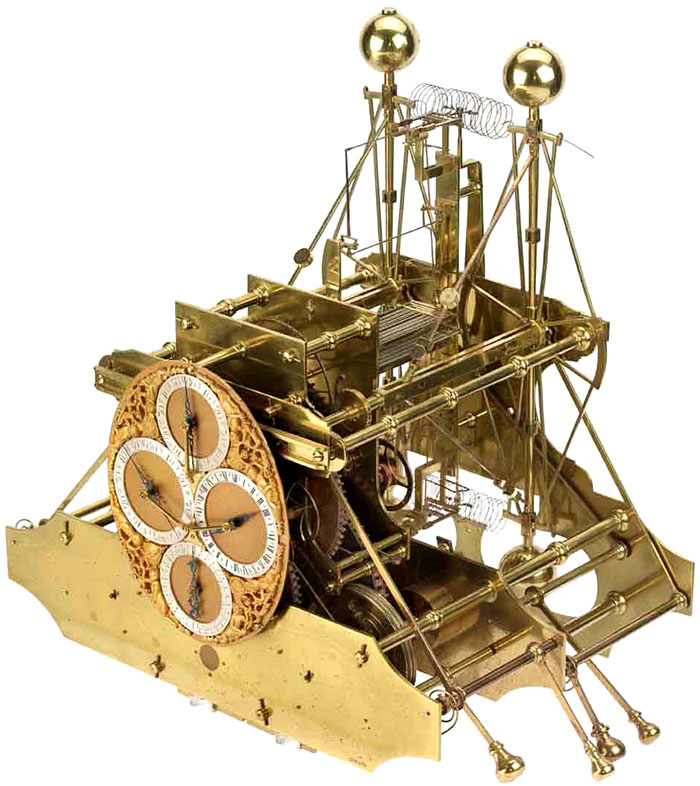
The Harrison marine chronometer [/] was the first experimental marine timekeeper made by John Harrison in Barrow-on-Humber between 1730 and 1735. It was the first step towards solving the ‘longitude problem’ and as such revolutionized navigation at sea. Photograph © National Maritime Museum, Greenwich, London
The Opportunity and the Cost of Chronological Time
.
What is the reality of chronological time? It is an axis – as remarked, a series of points.
But the points in themselves have no intrinsic quality. There is nothing to distinguish one point from any other on the chronological axis. And the fact that we name this point ‘9.59am’ on a particular day is more or less arbitrary. If Britain harmonised its clocks with the continent it would be 10.59am; if Bristol had given the world mean-time, it would have been 9.49am. Why 1st February not 32nd January? Why 2017? The point does not announce itself as 9.59am on 1st February 2017; it is we who name it as such and its name is an added, accidental feature.
However, chronological time is not devoid of a real feature; intervals of chronological time have meaning. An hour may be an hour wherever and whenever but two hours are twice as long as one. Intervals serve as measures of duration and have significance as such. Hence the interval is the only inherent feature of chronological time, and so we hold the chronological interval in great esteem. This is why we are fascinated with records. We seek to pack ever more into a given interval: more output, quicker journeys, faster meals. So it is that speed and striving for near-instant gratification are two of the great goals of our culture.
Further, in creating records concerning intervals we imbue them with their own character (e.g. ‘December was the warmest December since records began’). We can also create character by introducing a novel feature. So first, ‘new’ and ‘different’ are important features which are reflected in adverts and the contents of the news (sic, when it is not featuring ‘failures and absences’). The search for novelty, combined with the need for ‘more’ and ‘faster’ of what we have, contributes to the stress which gives our time so much of its character.
The very barrenness of chronological time has also conferred us with opportunity. We are free to erect our own landscape on it. The opportunity is much more than being able to arbitrarily name its points. We can add any feature we wish to any moment of this otherwise featureless, homogeneous time. We need not accept that midnight on 21st December must be cold and dark and a time for rest; we can have light and heat all day every day of the year. Entertainment is not something for evenings or feast days, but instantly available twenty-four hours a day. We can enjoy ice in June and strawberries in December. In July we can ski on the glaciers of Austria; in January bask on the beaches of Tenerife. And, of course, holidays are not holy (kairological) days, but taken when we or others determine – and too often taken to recover from the fury of work.
Not only can we set down features on the temporal landscape more or less where we wish, but often these features are themselves plastic, not concrete as they are in kairological time. With the microwave oven, we contract cooking time; with the deep-freeze we elongate the durability of foods. Medical research is dedicated to lengthening lifespan. Industrial engineers seek to shorten production processes by ever-stricter control of time through JIT (Just-in-time) techniques.
However, the gains that barren time enable are bought at a terrible cost over and above those already remarked. The greatest cost is the loss of the future. I do not mean that we have jeopardised the future through allowing global warming: more radically, I mean there is no future for the chronological citizen. In kairological time, the future certainly exists because even though it is unknowable, it is an approaching reality. Flowing toward the kairological dweller are happenings, mundane and significant, but always real: lunch, the next harvest, death, new generations. Though the future cannot be determined, its essentiality demands preparatory actions now.
By marked contrast, in chronological time, the future can have no reality, no being. How could it since, in common with all chronological time, it lacks any intrinsic feature? Tomorrow can only come to have extrinsic, added-on features when we travel in it. Certainly we can predict that tomorrow we will have chicken for lunch or that unemployment will fall, but how tomorrow will actually be, we cannot now describe. Ironically, for all that we devalue them in chronological time, only the past (‘unemployment was lower last year’) and the present (‘today we are eating chicken’) have a reality – a reality we endow on our temporal journey. Because we have not reached the future, we cannot yet imbue it with reality – and without us it is not simply empty: it is nothing.
Our hopes and dreams, our fears and anxieties, our forecasts and plans disguise this profound absence – but our actions betray the grim truth. Our carelessness – the carelessness with which we guzzle oil, dump wastes, pour out greenhouse gasses – happens because we are actually acting on the implicit, if hidden, understanding that there is no future to care about. This explains the lack of resolve and procrastination by governments when confronted by the dangers of their own industrial, military and transport policies.

Getting Back in Time for the Future
.
I have highlighted the differences between the time that predominates in our culture and that of the time of previous societies and civilisations in order to make clear the essential differences between them. But the boundary between them and us is not as absolute as I have at times appeared to suggest, and therein lies hope.
We do still possess some sense of kairological time, however atrophied. ‘Christmas is coming’, we still say. Parents care for the future in caring for their children, even if this care is compromised. We are not wholly divorced from the rhythms of daily, weekly and annual cycles. Our languages continue to convey the kairological meaning of time; the word ‘future’ derives from a Latin word meaning ‘coming’ – a sense more clearly revealed in the French a-venir, the German zu-kunft and Dutch toe-komst: the future comes to us, as the words say.
Developing a renewed sense of kairological time requires faith, concentration and imagination. Abandoning reliance on chronometers, forecasts and much else that makes up modern technology is not easy. But as individuals we can learn to cultivate our concentration on and awareness of the present. Meditation and mindfulness techniques, which teach us how to live in the present moment, can help, and their ever-more widespread acceptance is a real ground for optimism. The use of imagination is central, because this is the mysterious and misunderstood faculty by which we can sense the messages of time. Rather than misguidedly attempting to determine the (near) future through rationally derived plans, an imaginative hearkening to the guidance of the approaching future can lead us to the fitting response to its call.
In brief, the future is real but we do need, urgently need, to truly recognise its reality. Our role is to serve the future, not to try vainly to master it.
It is time, time to get back in time, back to kairological time.
Image Sources (click to open)
Banner picture: Sundial on the South Elevation of Ely Cathedral, Cambridgeshire, UK. The motto is the famous saying of Pittacus of Mytilene (c. 640–568 BC): “know the time” or “choose the opportune moment”. Photograph by Dave Porter / Alamy Stock Photo.
First inset: Clock in the central concourse of Grand Central Station, New York. Photograph by Carol M. Highsmith (Public domain), via Wikimedia Commons.
Other Sources (click to open)
This essay is based on an earlier publication by the author, ‘In and out of time’, Environmental Values 4 (1995), 149–66; this publication offers detailed notes and a full bibliography which are kept to a minimum here.
ST AUGUSTINE: Confessions, Book XI, Chap. XIV.
LEWIS MUMFORD: Technics and Civilisation, New York: Harcourt Brace, 1934, p.24.
DANIEL BOORSTIN: The Discoverers, London: J.M. Dent, 1984, pp.36–7.
HUGH BRODY: Maps and Dreams, Harmondsworth, Middlesex: Penguin, 1981, p.40.
H. HANN: ‘Hora’ in The New International Dictionary of New Testament Theology, Vol. 3, ed. Colin Brown, Exeter: Pater Noster Press, 1976, p.834.
Rt. Hon. KEN CARKE: ‘Ken Clarke on Brexit’ in The Observer, London, 5 February 2017.
MARTIN HEIDEGGER: ‘Time and Being’ in On Time and Being, trans. Joan Stambaugh, New York: Harper & Row, 1972, pp.14, 17.
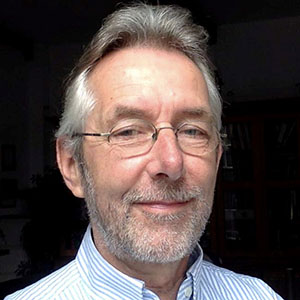
Dr Richard Gault has worked at universities in Scotland, Ireland, Holland and Germany, where he has taught and researched a variety of subjects including the history and philosophy of science; the history, sociology and philosophy of technology, and decision methodology. Since his retirement from the Amsterdam University of Applied Science in 2015, he has taken up the position of Principal of the Chisholme Institute, a school of esoteric education near Hawick in the Scottish Borders
Email this page to a friend
FOLLOW AND LIKE US
——————————————
——————————————
——————————————
FOLLOW AND LIKE US
If you enjoyed reading this article
Please leave a comment below.
Please also consider making a donation to support the work of Beshara Magazine. The magazine relies entirely on voluntary support. Donations received through this website go towards editorial expenses, eg. image rights, travel expenses, and website maintenance and development costs.
READ MORE IN BESHARA MAGAZINE
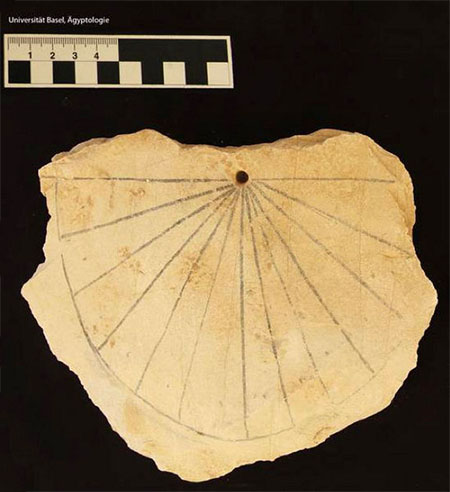
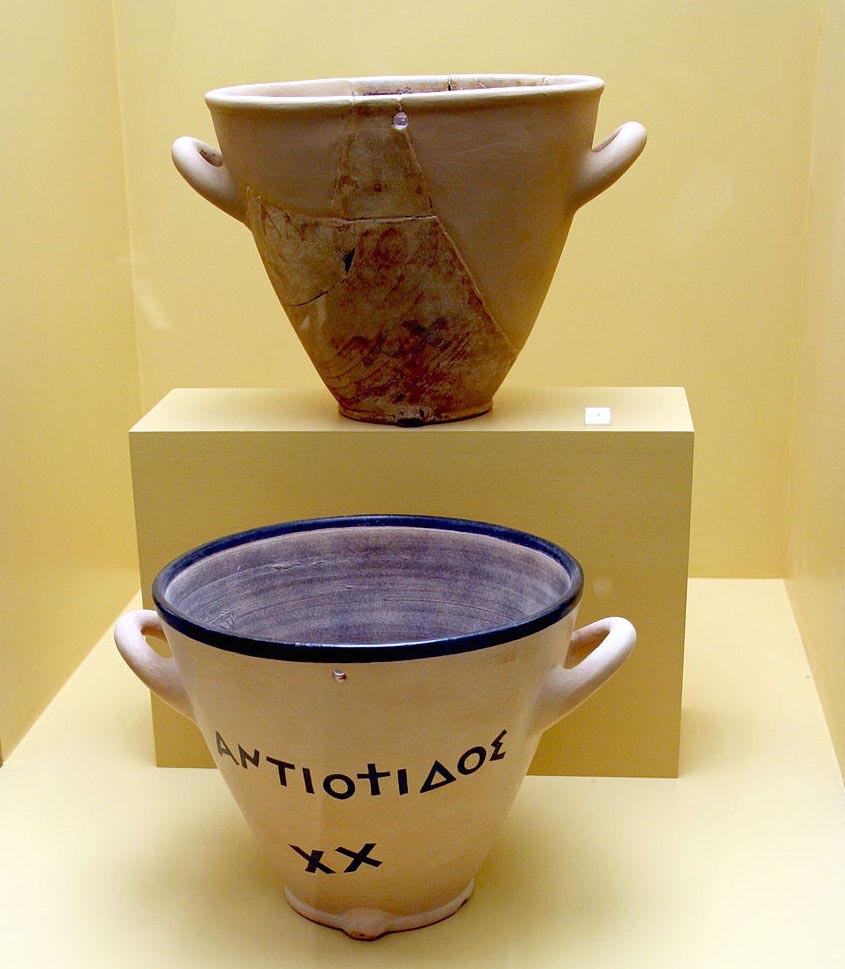
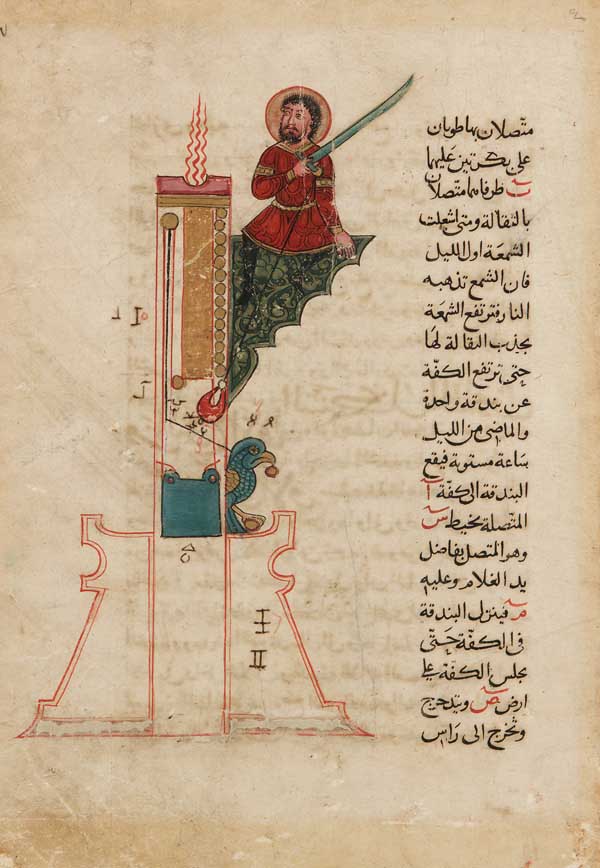



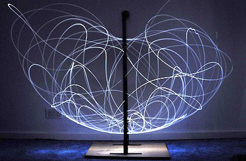
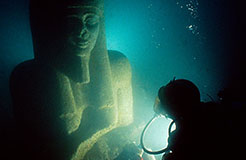
READERS’ COMMENTS
0 Comments